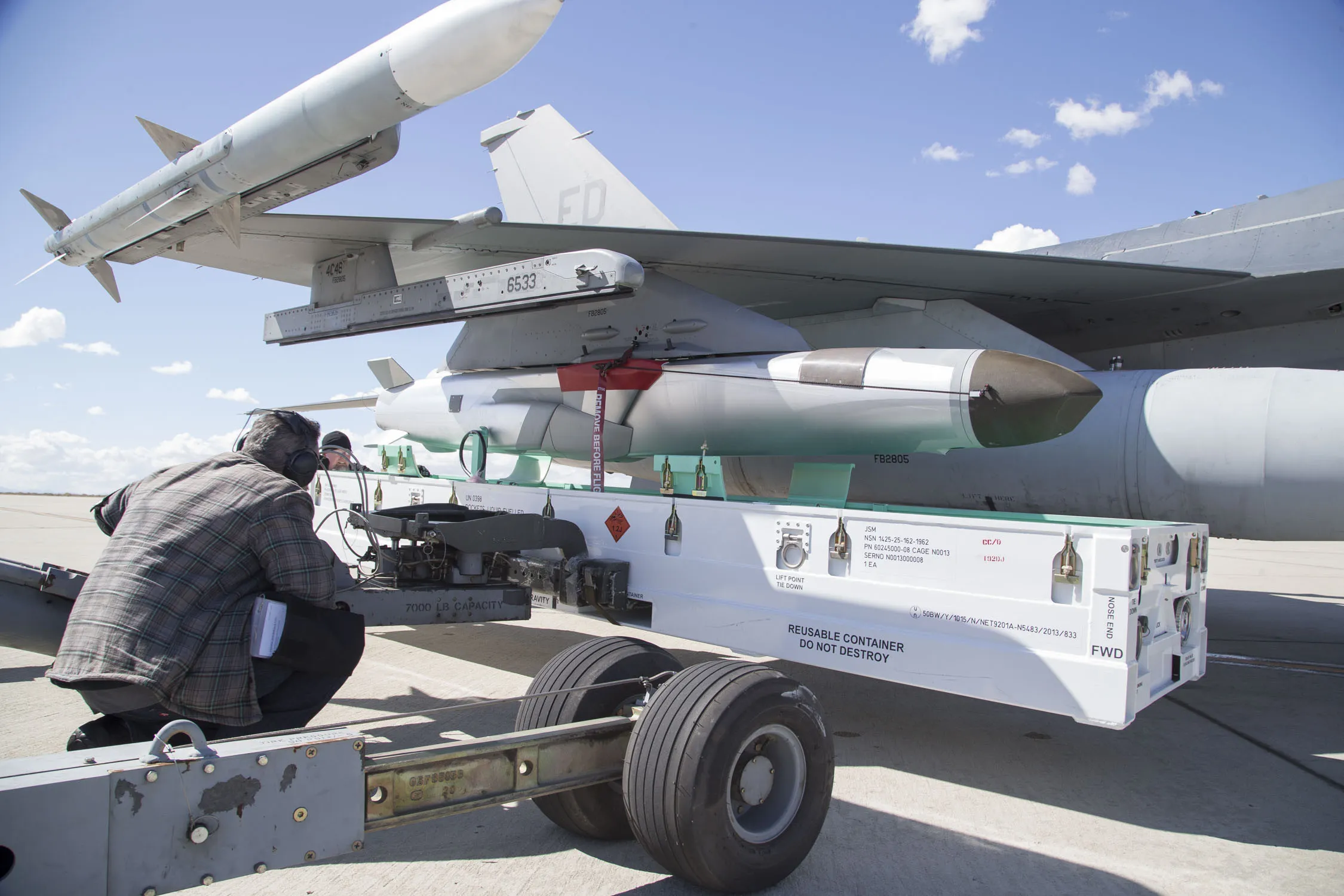Many proponents of the F-35 platform have for years spoke of its long-range sensing, EW, computing and stealth characteristics as a 5th-gen aircraft, yet the jet can operate in a lesser known full-loaded, nuclear-armed bomb-truck as well.

Many proponents of the F-35 platform have for years spoke of its long-range sensing, EW, computing and stealth characteristics as a 5th-gen aircraft, yet the jet can operate in a lesser known full-loaded, nuclear-armed bomb-truck as well. The F-35A is engineered to carry a nuclear bomb and is increasingly being upgraded to integrate emerging air-dropped and air-fired weapons.
Known for being sleek, stealthy, highly-networked, fast and drone-like with next-generation sensors, many regard the F-35 as a flying sensor-computer able to see and destroy enemy targets from unprecedented stand-off ranges. The F-35 has in wargames shown it can see and destroy large numbers of 4th-generation jets from distances where it cannot itself be detected.
This is true, yet a lesser recognized reality is that the F-35 can operate as a “bomb-truck” major weapons attack platform as well. With continuous software upgrades, the F-35 will consistently be positioned to arm itself with new, advanced, next-generation weapons. For example, the F-35 can now be armed with Stormbreaker, and advanced long-range air-dropped attack bomb able to track and destroy enemy targets from 40 miles using a tri-mode seeker. The Stormbreaker can track targets with infrared, laser and millimeter wave sensors. Also, many might not realize that the F-35 is also going to be nuclear capable and able to drop the B-61 Mod 12.

F-35 as Bomb Truck
Decreasing stealth properties does not render the F-35 ineffective in a variety of respects, given that the F-35 is built for heavy bombing as well as reconnaissance missions.
Thinking of these together, an F-35 could use its electro/optical-infrared (EO-IR) cameras and surrounding sensors to find far-away ground targets autonomously, and then attack them from the air with bombs.
The aircraft does have an internal weapons bay, intended to enable attacks while preserving a stealth configuration, yet a full-force attack will mean using the external pylons to enable what many call the F-35’s “beast mode.”
An interesting report from the Aviation Geek Club describes beast mode as arming an F-35 with “six inert 500-pound GBU-12 laser-guided bombs, four loaded externally on the wings and two internally in the weapons bay, as well as an AIM-9 training air-to-air missile.”

Naturally, this means an F-35 would increase its radar signature and decrease the effectiveness of its stealth properties, however, such a configuration would be possible in combat environments wherein the United States has already achieved air supremacy.
Externally hanging weapons present contours and configurations likely to provide enemy radar with a more detailed radar return, therefore delivering a rendering of the aircraft to adversaries.
Loaded, Armed F-35
This kind of attack mode might also be needed, should a combat campaign need to extend mission dwell time, creating the opportunity for F-35s to hit more targets with a larger weapons load.
Laser-guided GBU-12s, a guided bomb unit, can pinpoint ground targets “lit up” by laser designators from the air or ground, enabling precision strikes
The Air Force’s GBU-54, also a laser-guided bomb, also brings the ability for an aircraft to hit moving targets on the ground.
This would be a massive increase in efficiency, as the aircraft could respond to new intelligence information in real time, thereby greatly reducing latency and sensor-to-shooter time.
By extension, the F-35’s often-discussed “sensor fusion” could play a role here, as it relies upon computer automation and AI to gather otherwise separate sensor information, analyze and organize it to provide pilots with a single integrated picture.
Navigational, targeting, and electronic-related metrics can all be merged by the aircraft itself.





